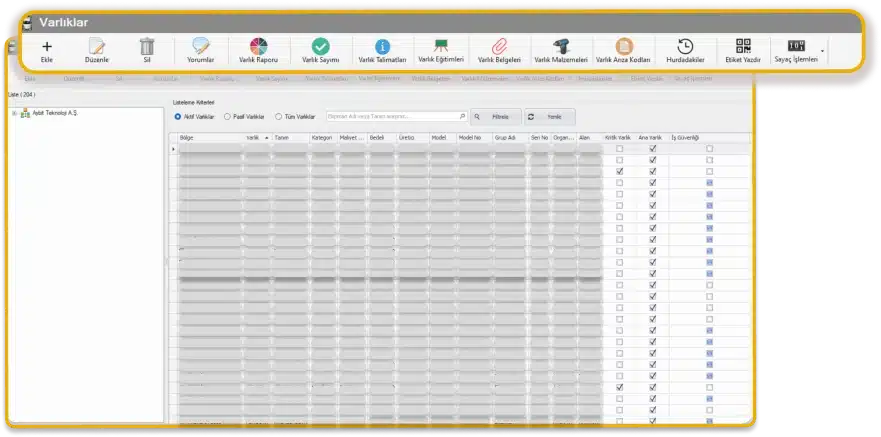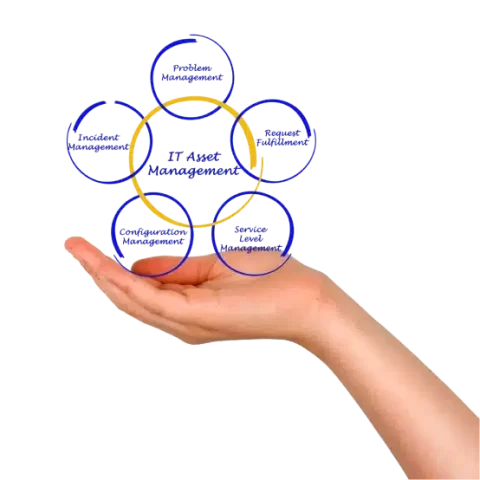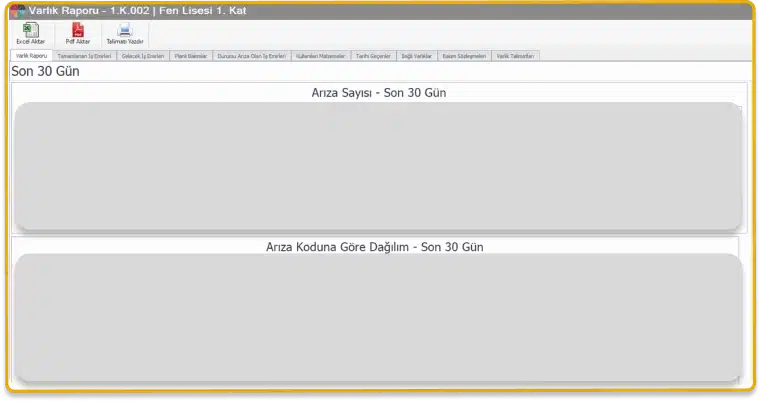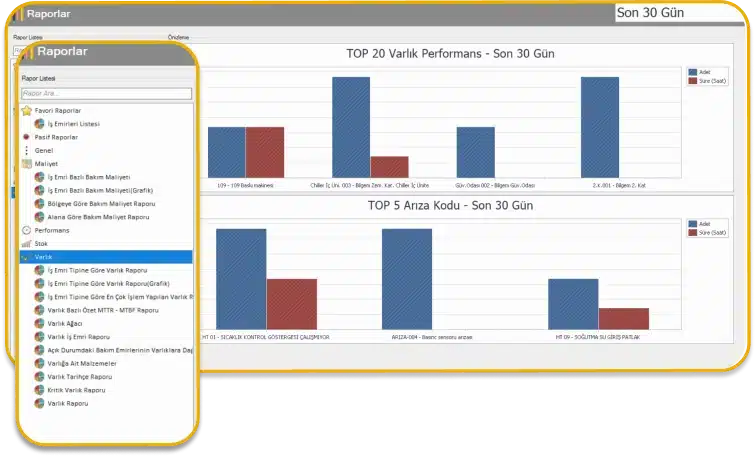Enterprise Asset Management

World-Class Enterprise Asset Management
Tired of trying to organize the clutter of your equipment, wondering if it is properly maintained, not knowing the cost of maintenance, and all the other hassles that come with managing assets? Manage thousands of assets easily from anywhere with Repairist Maintenance Management System and Enterprise Asset Management module. You can easily search and monitor assets in a tree structure.
- Be informed about the current operational status of your assets and their costs to you.
- Keep complete and detailed maintenance notes.
- Organize your assets and their sub-assets in the desired hierarchy.
- MTTR, MTBF, etc. View real-time and detailed reports with KPIs.
- Find information quickly and easily with QR Codes.
- Find information quickly and easily with QR Codes (barcodes).

Manage Your Assets Your Way
Tired of trying to fit everything you need into a crowded excel sheet? Tired of complex software that requires you to visit 5 different screens to perform a simple task? We designed Repairist Enterprise Asset Management to solve these problems.
- With simple and fully customizable widgets, you can track location, trademarks, models, manuals, images, operating hours, meter readings, and all other information that matters to your company.
- View everything about your asset in one easy-to-use spot. View Asset Information, Work Orders, Preventive Maintenance, daily work done and reports.
- Track and intervene faster by viewing all past Work Orders, Preventive Maintenance and Work Requests in one easy-to-manage screen on mobile or desktop

Monitor Assets
Monitor and then report on asset transactions and maintenance in your facility. Extend the lifespan of your assets. Know exactly how much a single asset or a group of assets costs you to maintain, how quickly they are repaired (MTTR), how often they fail (MTBF), what parts are used in them, and how much time is spent on maintenance.
- Mark your assets with a unique QR code so your team can instantly find the asset in the field.
- Meet Repairist, which requires easy training to use.

Reduce Maintenance Costs
Let’s face it, the first step to improve your operations is knowing what’s good and what’s bad. With Repairist’s Dashboards, you can finally start to find the things that are going badly, if any, and put data-driven plans into action. This leads to reduced labor costs, shorter downtime and more. With Repairist’s Custom Dashboards;
- Know where and why your maintenance budget is spent.
- Find out which asset costs the most and why.
- Create your own custom KPIs.
- View critical maintenance KPIs such as MTTR, MTBF, etc.
- View automatically generated and updated reports based on your metrics.
- View reports that can be easily shared with Repairist.
Enterprise Asset Management (EAM) is the process of effectively managing, tracking and maintaining a company’s physical and digital assets. This management extends the life of assets, increases efficiency and reduces costs, thus creating a positive impact on the overall performance and profitability of the company.
When choosing a EAM, it is important to evaluate whether it suits the company’s needs and goals. An effective system should offer basic features such as asset tracking, maintenance planning, risk management and cost analysis. Additionally, having a user-friendly interface and integration capacity ensures effective use of the system.
Yes, it provides cost savings by ensuring more efficient use of assets and reducing unnecessary maintenance and repair costs. Additionally, by preventing malfunctions and disruptions, it supports business continuity and reduces costs in the long term.
For SMEs, EMA can be implemented by providing scalable and flexible solutions. These businesses can choose simpler and more cost-effective EAM solutions that suit their needs. The important thing is to choose a system that suits the size and unique needs of the business.
Enterprise asset management (EAM) is the process of effectively managing and optimizing all of a company’s physical assets (machinery, equipment, buildings, etc.) and digital assets (software, databases, etc.). This management ensures that assets are used at full capacity and efficiently, reduces maintenance and repair costs, and extends the life of assets. EAM helps reduce your company’s asset-based risks, increase operational efficiency and reduce overall costs. Additionally, strategic asset management plays an important role in achieving your company’s long-term goals because it ensures the optimal use and continuous improvement of your assets.
Although EAM (Enterprise Asset Management) and CMMS (Computerized Maintenance Management System) are both systems related to asset and maintenance management, their main differences lie in their scope and focus.
EAM (Enterprise Asset Management):EAM aims to comprehensively manage all assets of a company. This management includes monitoring, maintaining and disposing of assets throughout their life, starting from their acquisition. EAM supports strategic decision-making processes such as asset performance, risk management and investment planning.
CMMS (Computerized Maintenance Management System): CMMS, on the other hand, deals more with equipment and facility maintenance. These systems focus on operational tasks such as managing maintenance requests, organizing planned maintenance activities, and maintaining maintenance records.
In short, EAM supports overall asset management strategies and decisions, while CMMS optimizes daily maintenance operations and workflows.
